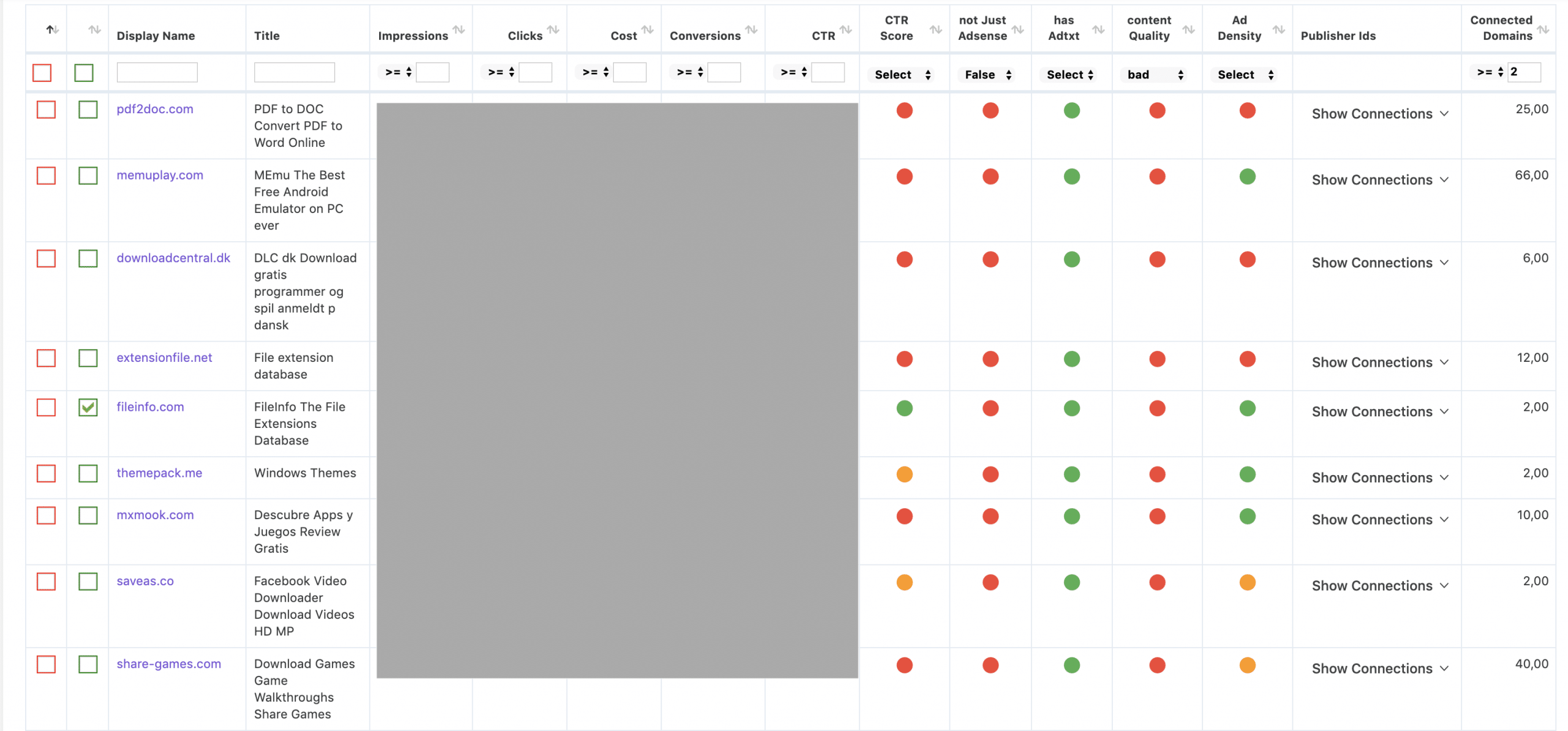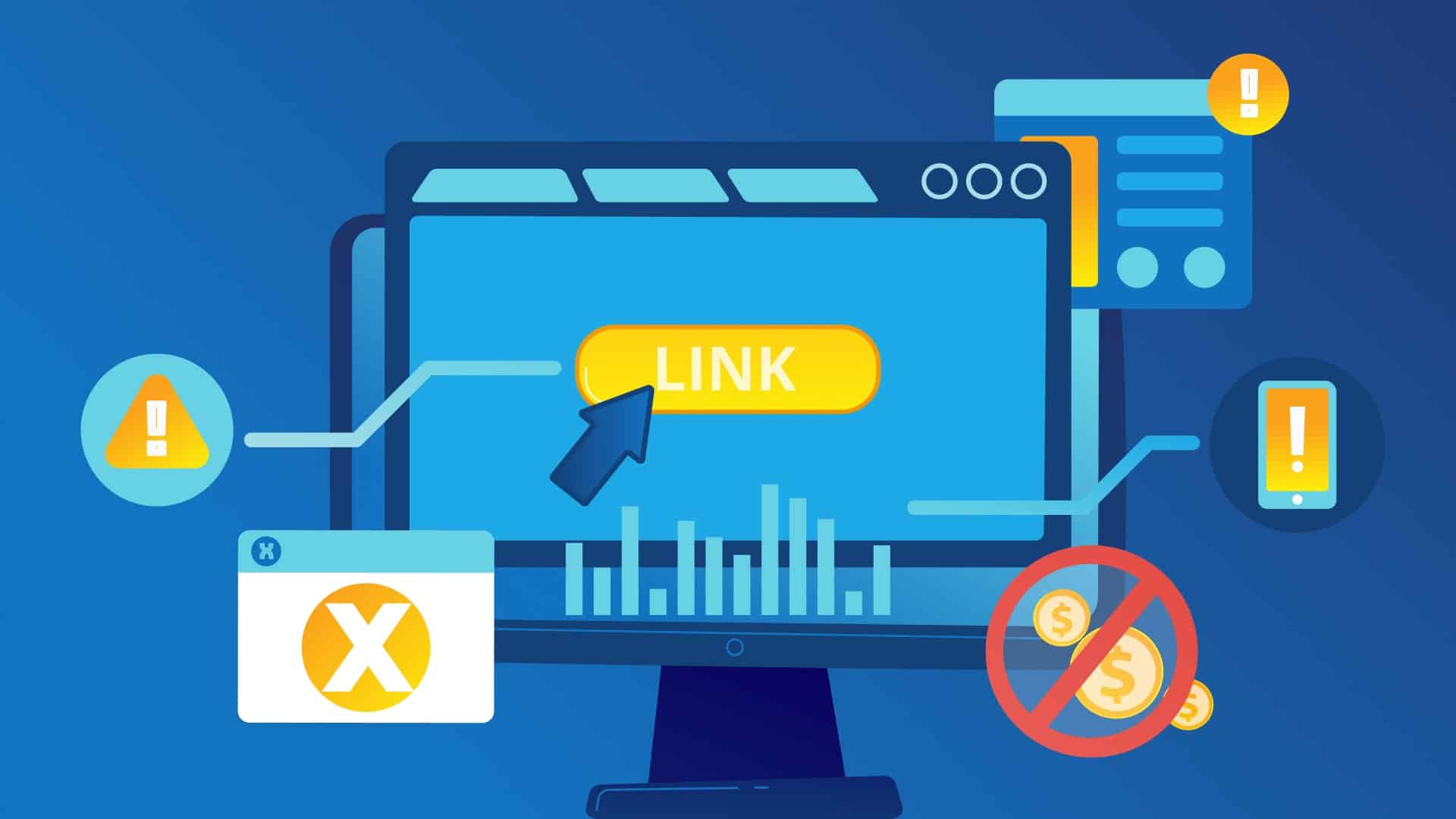If you’re running ads on the Google Display Network, you’d better check the placements where your ads are displayed. You might be wasting precious budget on spam.
There are situations where website owners profit from AdSense on crappy websites offering no value. How is this possible? After all, Google keeps informing us about the new AI solutions in its Google Ads product. How come they don’t classify these sites as “spam” or “bad”, and stop those placements from wasting your budgets?

Building quality measures for display placements
There are some KPIs that can be directly used out of the Google reports for your display placements:
- CPOs (Cost-per-Order): Normally, you need a certain sample size to deduce results from your CPOs. To get a larger sample, you’ll need to pay for a few hundred clicks per placement. If you think about over 100,000 placements, it’ll be quite expensive.
- CTR (Click-Through-Rate): You can identify bad placements by checking your CTR. This works for even a few impressions, but you should manually check for placements with a very high CTR.
Let’s enrich these KPIs with some data outside of Google reports. For this, we’ll use some approaches that analyze the placement domain:
- ads.txt available/not available: This is a great source of information. If a placement doesn’t provide an ads.txt file, you should have a closer look. I’ve found funny examples where website owners have been very creative in avoiding their publisher’s regex parsing—ID from the website’s source code.
- Website made for AdSense only: Google makes it very easy to apply for the AdSense program, even with a thin content website. This is completely different for other networks. We use the identified networks in ads.txt as a quality metric—websites with just AdSense should be looked at more closely.
- The number of ad slots: We look for the IDs of ad spaces in the website source code and count them. You all know the examples of websites that are full of ads. Probably, this is a placement you should set as negative.
- Content quality: A mix of counting unique words and total words gives you a good fingerprint of the website. Be careful with thin websites of a lot of keyword stuffing.
- Use the publisher-ID network: We looked at a lot of placements and started identifying networks of websites that use the same publisher IDs. If you catch one bad placement, you can block a lot of others. Off-topic: If you search for SEO niches that monetize with AdSense, this is a very good method for analyzing some very smart approaches out there.
When you put all the mentioned approaches together, you’ll have something like this for your daily work that helps you to label negative placements, but also discover some interesting placements that you should add as managed:

Placement examples where Google has “no clue” that your budget is wasted
Build a serious website that offers a tool, converter, etc. Put some nice content on the website with system requirements and such, so users feel that they want to download/test this tool. Now flood your website with ads that use the call-to-actions of responsive display ads, like “Download”, “Start”, etc., and keep them in the same design as your website elements. You’re right, Google—this isn’t fraud, but it’s obvious what’s happening here.

Seems to work pretty well – have a look at the connected domains over the publisher IDs now:


Even if you use paid conversions (e.g. to launch a trial version of a software), you pay a lot of money for these placements. Because many users will download and launch your software looking for the button to launch the file conversion.

Key takeaways
???? If you use automated placements, you need to continuously check the placement domains. Also, if you’re using pay-for-conversions for soft conversions, you’re probably wasting budget.
???? In this blog post, we’ve only mentioned bad placements—with the same KPIs, you can identify and add new quality managed placements.
???? There seem to be a lot of placements that will never, ever bring SEO traffic (where they get the traffic from is a different story). A good approach is to look for valid placements that also rank in Google for your money keywords. For scalability, think of a process fetching the SERPs for top your 10000 keywords and scraping each of the websites and look for an ads.txt file with Google AdSense.
Maximize your ad performance
Our experts can help you find and add high-quality managed placements for optimal results. Contact us today and discover the benefits of strategic ad placement analysis tailored to your unique needs.



